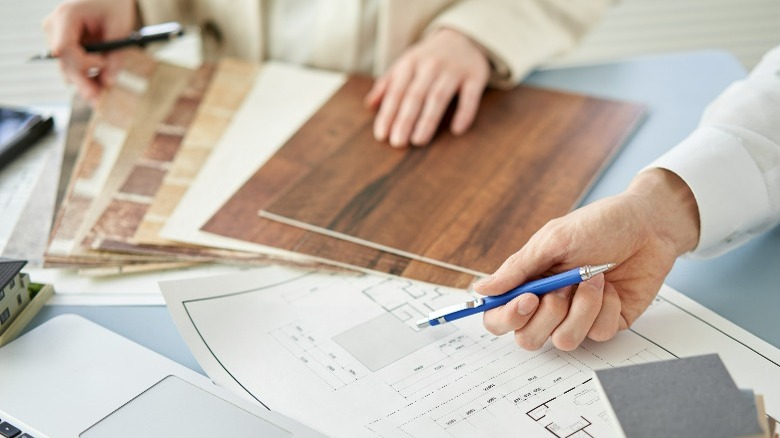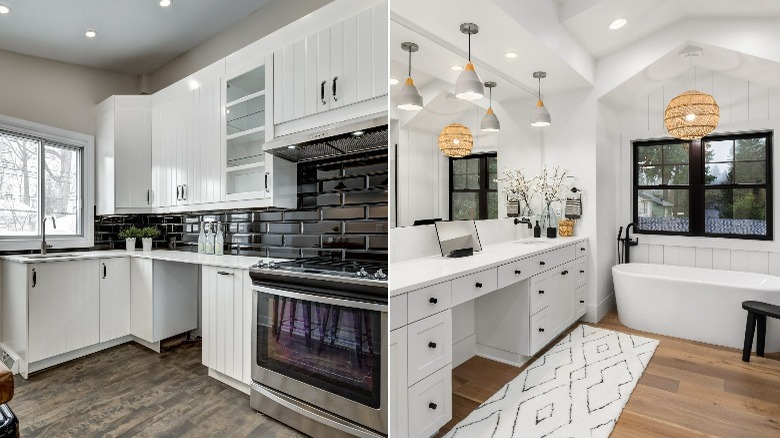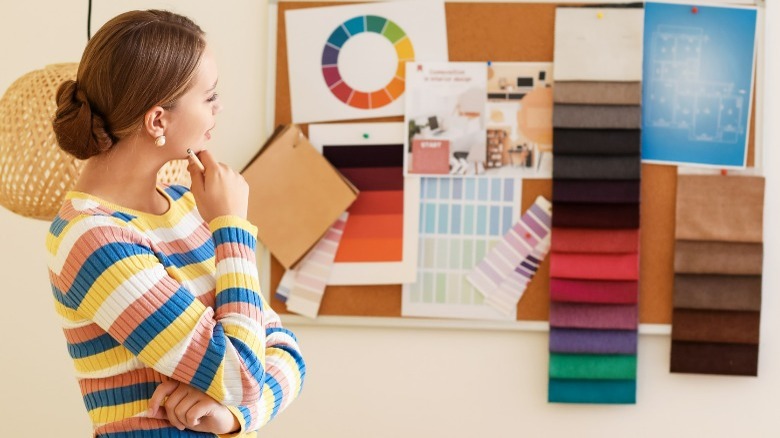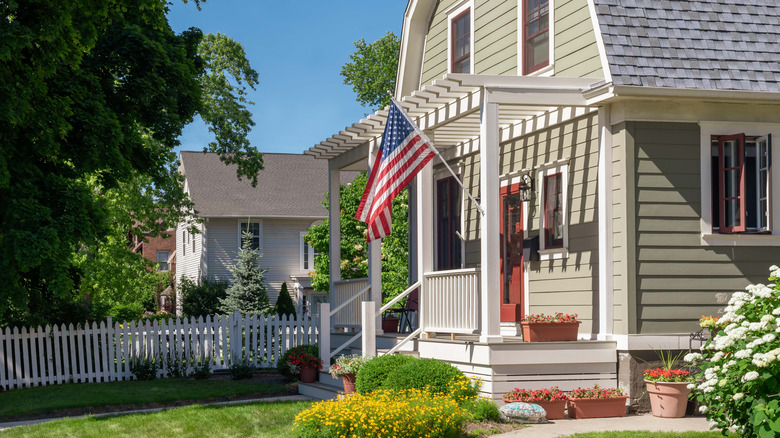Ward Schraeder Shares His Top Pointers For DIY Home Remodeling
HGTV's "Bargain Mansions" is hosted by Ward Schraeder and his daughter, Tamara Day. Tamara has the design expertise, while Schraeder brings his extensive experience with renovations and remodeling. Originally, he got started when he didn't have enough money to hire a contractor for his own home. Eventually, he ended up working as both a residential and commercial contractor. As his kids grew up and bought their own homes, he was often called on for his expertise.
According to his interview with Behind the Studs Podcast, when he stopped to watch his daughter make her introductory video prior to the start of "Bargain Mansions," the production team filmed him talking with his daughter. The network saw the video, liked what they saw, and asked him to join the show. They started buying run-down properties in the redeveloping area of Kansas City. Some of the classic houses had once had carriage houses and ballrooms and seemed too unique to tear down, says Schraeder.
Do your research
If this is your first DIY project, choose one that is small in scope and that makes sense for your skill level. Save projects with costly materials for when you've mastered the tools and techniques that are required. Ward Schraeder recommends checking YouTube for how to do specific work. Look for reputable sources of information, such as Schraeder's Working with Ward series. You'll also have to make decisions about layout, materials, time, and of course, the budget.
Estimating projects starts with accurately listing all the supplies and tools and measuring to determine the number of materials needed. Check online or talk with someone in a home improvement store to make sure you've considered all the materials you'll need. You can rent tools from some home improvement stores like Lowes. Some projects may require permits. Contact your city hall or the department of public works to find out what needs a permit. Check that nothing else in your home will be unexpectedly impacted by your project. For example, if you're adding shelves, you'll need to check for studs in the wall to support the project and make sure that you know where the electrical and plumbing lines are so you don't hit anything unexpectedly. Will the shelves protrude too much and become an obstacle for someone walking by them? If your project involves a door, measure and check that it won't bump into anything when it's fully opened.
Expect some mistakes
Ward Schraeder says you shouldn't be afraid to tackle a DIY project, but at the same time, you should expect mistakes. That's just part of the learning process, as with anything new. As mentioned above, thorough planning will help reduce some of the mistakes, but there is no way around the things that happen when you try something new. This is another reason to choose small and simpler projects and build up to larger projects slowly as you gain that experience and confidence.
Today's Homeowner agrees and says that even if you choose a project that has the potential to become larger, like painting a room or spackling and making repairs, just start small. Rather than ripping out old horsehair plaster and replacing it with sheetrock if you've never done that type of work before, start by learning how to spackle over the nail or screw holes that are left by old pictures hung on walls.
Kitchens, bedrooms and baths...oh, my!
You've probably heard that kitchens, bathrooms, and master bedrooms bring the biggest return on your investment when you sell your home. While you should renovate or remodel your home for your own tastes and comfort, you don't want to make costly mistakes that detract from your home's value. Even if you are going to do the work yourself, it makes sense to consult with experts like interior designers and real estate agents to get their input on your ideas, per Houston Chronicle. Many kitchen and bathroom showrooms have free consultation services, as well.
A top-selling local real estate agent can also tell you what's trending. Just because you see something on Pinterest or HGTV doesn't mean it will be successful in your local market. Remodeling puts out a Cost Versus Value report every year, which shows the remodeling estimates and their return at resale in 150 U.S. markets. Use it as a guideline, but always double-check what's happening in your local market.
Figure out your design and color style
Don't be afraid to put your design stamp on your home. There are tons of online resources to help you get ideas about what you like, from sites like Pinterest to Bobby/Berk's explanation of different design styles. This is another reason why remodeling and renovation projects can't be rushed. It may take you time to get inspiration. Take note from Candice Olson, who suggests creating a vision board. You don't have to be an artist to draw out a rough sketch of a room, and you can find sample color chips at your local home renovation stores and paint stores. Take photos of patterns and fabrics that you like, and have fun creating your own design boards.
Many paint manufacturers like Sherwin Williams let you upload a photo of your house or a room and try on different colors within their app. Most major paint brands also sell 8-ounce size sample paints so that you can brush on the different colors and see how they look on your walls, especially as the light changes throughout the day. Of course, renovations cost money, and preparing for them properly can involve some expense, but it may save you from having a major re-do down the road.
Don't neglect the curb appeal
We all know first impressions matter, which is why Ward Schraeder reminds us to spruce up the outside of our homes, too, per Modern Wellness Guide. But what's the big deal if your home is not currently for sale? First of all, even if it doesn't bother you, it's possible that it bothers someone else who lives in your home. Coming home at the end of the day and seeing the peeling exterior paint, a cracked front walk, and a raggedy-looking landscape can feel very depressing. If someone in your home feels that way, you can imagine what the neighbors may think!
Your property may be your biggest financial investment, and its value, and that of your neighbors' properties, are all connected when it comes to assessing overall neighborhood values, according to the National Association of Realtors. On top of that, upgrading the exterior appearance of your house and property is something that takes time and money. It isn't something that can be tackled quickly when you are ready to sell your house. Save up for the larger repairs, and tackle the things that you can do yourself one piece at a time. Sometimes, just raking, mowing, and weeding can be a great start to transforming the curb appeal!





